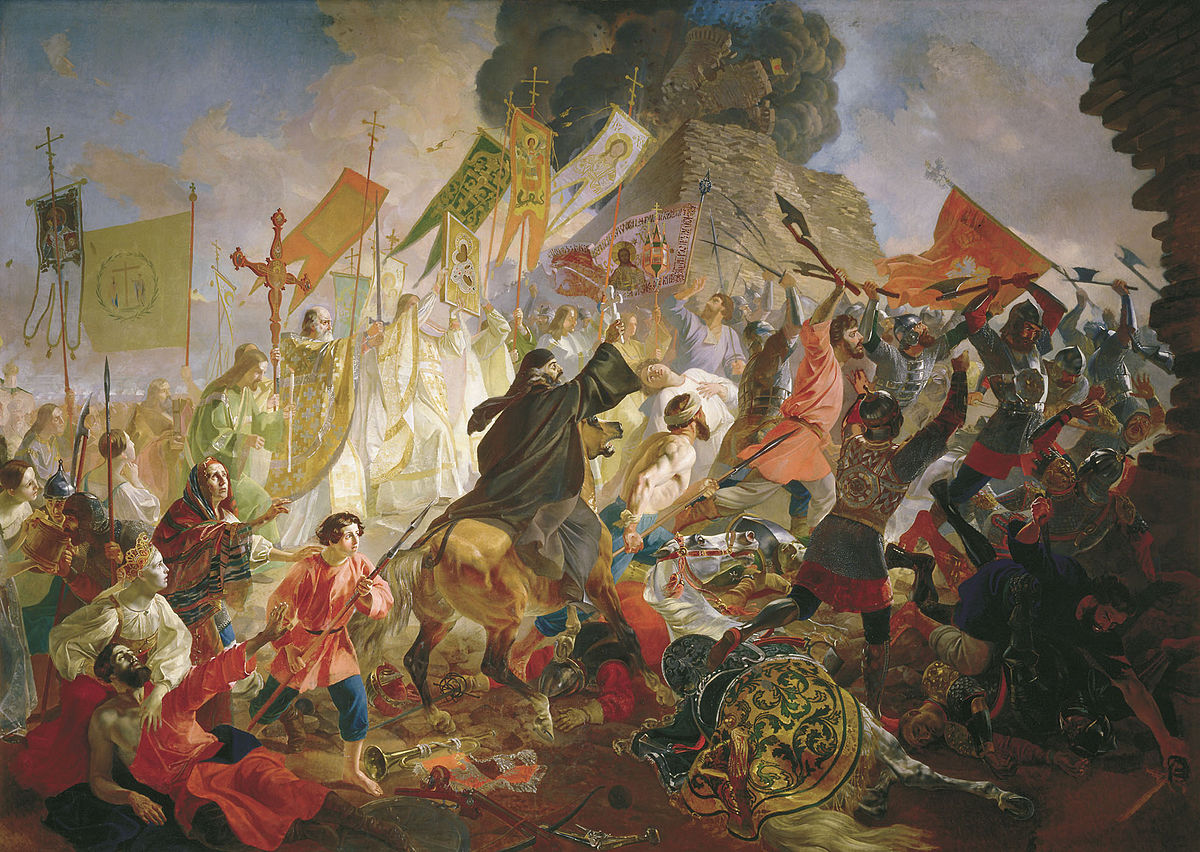
Starodub War
Vilnius, LithuaniaUpon Vasily's death in 1533, his son and heir, Ivan IV, was only three years old. His mother, Elena Glinskaya, acted as the regent and engaged in power struggles with other relatives and boyars. The Polish–Lithuanian monarch decided to take advantage of the situation and demanded the return of territories conquered by Vasily III. In the summer of 1534, Grand Hetman Jerzy Radziwiłł and the Tatars devastated the area around Chernigov, Novgorod Seversk, Radogoshch, Starodub, and Briansk. In October 1534, a Muscovite army under the command of Prince Ovchina-Telepnev-Obolensky, Prince Nikita Obolensky, and Prince Vasily Shuisky invaded Lithuania, advancing as far as Vilnius and Naugardukas, and built a fortress on Lake Sebezh the following year, before being stopped. The Lithuanian army under Hetman Radziwill, Andrei Nemirovich, Polish Hetman Jan Tarnowski, and Semen Belsky launched a powerful counterattack and took Gomel and Starodub.
In 1536, the fortress Sebezh defeated Nemirovich's Lithuanian forces when they tried to besiege it, and then the Muscovites attacked Liubech, razed Vitebsk, and built fortresses at Velizh and Zavoloche. Lithuania and Russia negotiated a five-year truce, without prisoner exchange, in which Homel stayed under the king's control, while Muscovy Rus' kept Sebezh and Zavoloche.
